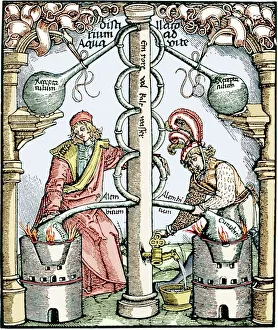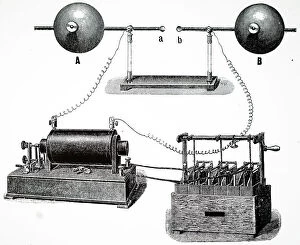Condenser Collection
In the 16th century, distillation was depicted in a captivating woodcut, showcasing the intricate process of condensing liquids
All Professionally Made to Order for Quick Shipping
In the 16th century, distillation was depicted in a captivating woodcut, showcasing the intricate process of condensing liquids. Fast forward to the First World War, where women played an essential role in factories, diligently working on condenser tubes. The Engineer's bound volumes from 1910-1911 shed light on the technological advancements surrounding this crucial apparatus. An engraving titled "The Campaign at Suakin" transports us to historical times when condensers were utilized for various purposes beyond distillation. Moving ahead, a lithograph showcases the Watts engine, highlighting its significance and impact on industrial development. Distilling nitric acid or Aqua fortis is captured in another intriguing engraving that demonstrates how condensers were employed for chemical processes. A stationary engine engraving further emphasizes their widespread use across different sectors during that era. The Coolgardie Goldfields' enchanting engraving takes us down under to Australia's gold rush period where condensers played a vital role in mining operations. Another colored engraving from Physics (1833-39) exemplifies how these devices were explored and studied within scientific realms. A glimpse into 1882 reveals yet another depiction of distillation techniques involving condensers. Lastly, we are transported to London's South Metropolitan Gas Company works in East Greenwich through an image capturing their impressive array of condensers dating back to 1891. Throughout history and across industries, whether it be wartime efforts or scientific exploration, these glimpses into various time periods highlight the significant role that condensers have played - transforming vapors into liquid form with precision and efficiency.
















































